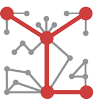Alphabet/Google’s revenue continues to grow. In fact, earlier this year, it briefly surpassed Apple to become the most valuable public company. But, over the years, Google has reported one number that has left the advertising world wanting to know more. Since 2011, the average ‘ad cost’ continues to decline. In simple terms, Google is serving more and more ads every year, but each ad is earning company less and less. To someone in the online advertising world, this should not be news; online ad effectiveness has witnessed slow and steady decline over the years. The industry doesn’t want its customers to know about some underlying issues that are creating an online advertising bubble. Following six issues are a big reason for concern as there would likely be no turning back the moment advertisers get a grip of what is really happening.
1 – Perils of Technology & Automation
Advertising technology has seen tremendous advancement in the past decade. From precise user tracking and matching algorithms to automation and programmatic buying, placing an ad now requires very little human effort. For most part, this has been a big boon for all stakeholders, but some cracks are starting to show. For one – advertisers took industry’s word on ad effectiveness, who in turn totally relied on advanced technology for their argument. If you look at ad performance over the years, it paints a completely different picture – online ad efficiency has been declining, and it has been declining for some of the most advanced online businesses who really know what they are doing. Yet, there is a much bigger irony at play – virtues of automation are becoming its own flaws. Automation has made it extremely cheap to plan and place ads on small/low quality websites, which has encouraged advertisers of all sizes to join in hordes without understanding anything about ad efficiency.
2 – Too Many Intermediaries
While technology and automation typically gets rid of intermediaries, online advertising has seen a reverse trend. Gone are the days when you had a straightforward Advertiser – Agency – Publisher triangle. Today, among other players, we have Trading Desks, Demand Side Platforms, Ad Networks, and Traffic Brokers. Increased technical advancement (read complexity) has seen introduction of more and more intermediaries, each of them getting a cut from Advertiser’s budget. This in turn means lower end-fee that publishers pocket, and low quality ad placements. With all the automation, it’s an even more complex game for everyone (experienced or not) spending money on online ads. Customers have to increasingly rely on intermediaries to execute, and the process is anything but transparent. Buyers have limited control over their own advertising campaign, and have no other option but to believe that advanced algorithms are doing their job.
3 – Market is Shrinking
Online advertising market is saturated. In fact, it is shrinking. Whether it is search, display, social, mobile, or affiliate, there has been an inundation of online ads. This has left internet users frustrated. Afterall, who really wants to be interrupted by advertisements? As a result, popularity of ad blockers is on the rise, which has aggravated market decline. What’s worse is that users installing ad blockers tend to be wealthier and more internet-savvy (which directly translates into more online transactions).
4 – Subprime Ad Space
As the market shrinks, ad companies are offsetting by serving ads on low quality websites. Advertisers are being sold on complex targeting algorithms that ensure it is worth placing an ad on a specific (low-quality) website because the match is based on high-level user tracking. Some of these websites would have never passed the eligibility criteria 5 years ago, but now have access to large number of advertisers. Most brands would likely reject these websites if only they knew where their ads are going to be placed. Even the most advanced online advertisers have very little information about where their ads are going to show up.
5 – Comeback of Display
What’s worse than subpar ad space? Not being able to track who is viewing those ads. Unfortunately, despite all the advancement, large advertising budgets are being spent on Display Ads in the name of “brand awareness”. Advertisers have no idea who is viewing their ads and how efficient they are. Everyone in the industry understands the issue, but they are in mute mode. After all, it has not come about on its own; push to display advertising has been engineered by the industry trying to move away from PPC. It is an industry agenda (rather, a need) fueled by increase in consumption on mobile where users avoid clicking ads. In fact, Display ads will surpass PPC in 2016. But, who (specifically) sees an ad is not the only concern for advertisers, the bigger concern is whether it is viewed at all. Industry standards for a display ad viewability are so low (considered viewed if 50% pixels are displayed for a single second), it’s anybody’s guess how many such ads are actually seen by users.
6 – Systematic Ad Fraud
Ad fraud has always been there. Whether it’s fake clicks by ad clickers in the developing world, or placing ads on unqualified websites. Meanwhile, bots have become much more advanced and difficult to detect. But, there is an even bigger issue that I would like to call Systematic Ad Fraud. The fact that cheaper ad space is being sold at the same high price to advertisers is what I believe is the biggest threat facing online advertising. One can easily see the factors that are driving this – increase in intermediaries each seeking to get a good cut, and low cost ad space sold at much higher margin. Advertisers have no clue about this because of increased complexity, decreasing transparency, and low controls. There is not enough reason for advertisers to spend resources to establish accountability for ad buying because industry has convinced them that technology is better at doing that (and, it is). But, this, along with ease of buying has also made it easier to buy useless ad space. Advertisers are prone to fraud more than ever, but industry would never report it as fraud. It is simply too dangerous as it will likely get rid of high margins industry makes from low-quality traffic.
Here’s the thing – advertisers cannot be fooled for too long..
As with any market that has shown signs of a bubble, online advertising industry soon has to start showing accountability. It’s not long before customers will start realizing what is going on, and try to understand why their ad budgets are not producing results. Budget cuts would soon follow, pushing the industry to show more accountability for the money it is taking in. This would be a good thing, and would help the industry sustain better. It will significantly bring down the cost of low quality ad space and ultimately get rid of these websites as they become unsustainable. As this scenario materializes, Google’s growth will significantly slow down, and online advertising world will see many crashes.
-
Mikel Diez Parra



